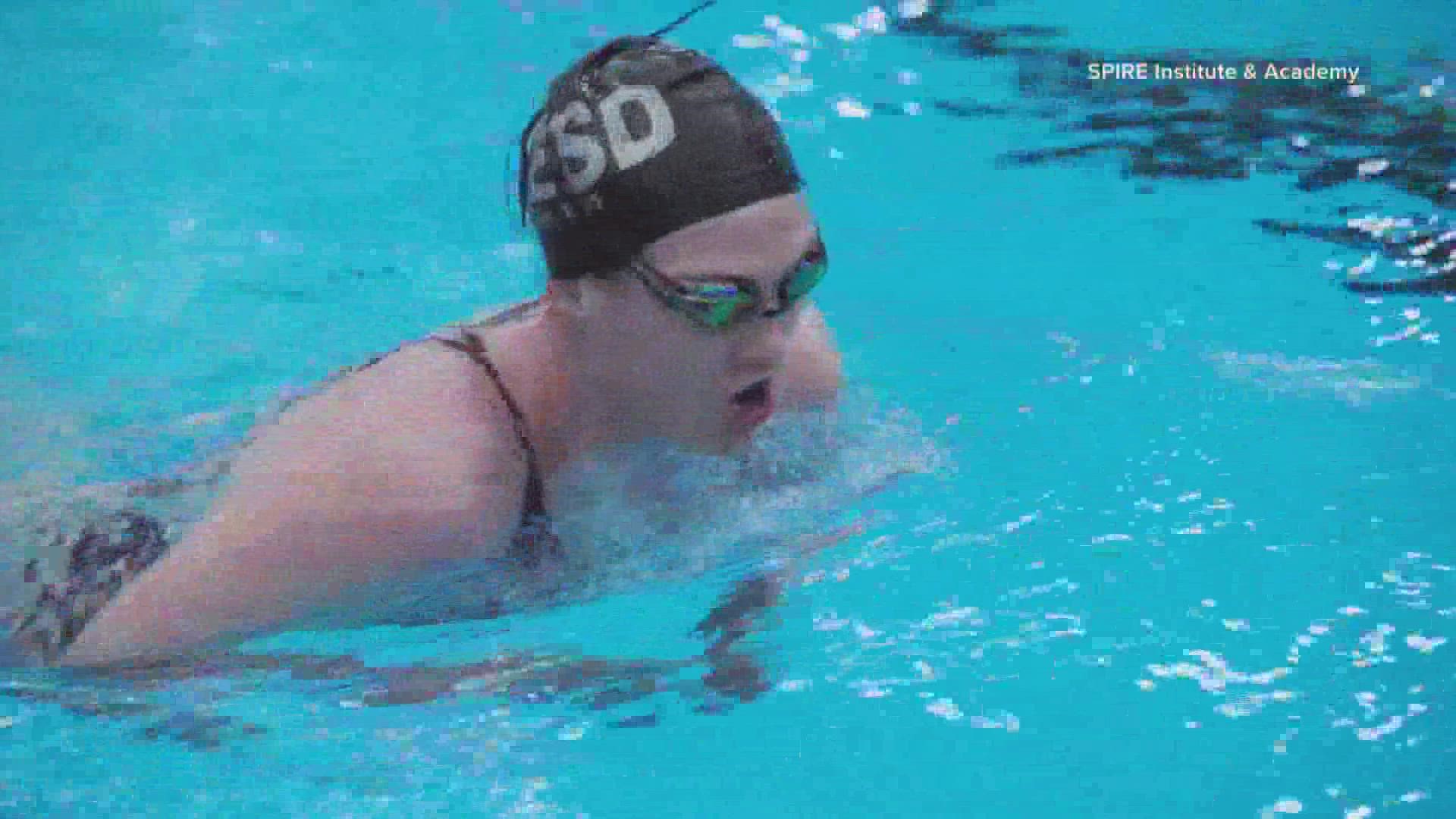GENEVA, Ohio — The athletes training right now at SPIRE Institute in Geneva have big dreams -- some with Olympic dreams. Like 17-year-old Alana Devlin, a swimmer from Canada. But even in the greatest of training company, Alana's swimming career almost ended.
"Before any type of race, like not even any race I'm good at, I would just feel this shaking, and be super anxious. And it just, I couldn't swim."
A shoulder injury at age 14 sent her into a spiral. Much like Simone Biles explained "the twisties," or a mental block stopping her from gliding through the air at the summer Olympics, Alana says her anxiety ruined many meets before they even began.
"If I get on the block and I'm really anxious, I will feel myself, like, start shaking to the point where I get disqualified. That's happened," she recalls. "When I had to come back, all my teammates who I was once faster than, or pretty close to, they were all way ahead of me."
That began a months-long journey of finding herself in the sport -- and as a human, again. Now, she uses two methods to overcome game-day jitters.
The first: Visualization.
"If I have a really important race, and I need a time, sort of visualizing how that race is going to go helps me prepare for it. Or sometimes I like to throw in challenges that might happen in the race, how would I get over that," she says.
She also uses the idea of a growth mindset to help her not fall back in her thoughts of performance.
"Not being stuck on past races where I did really bad or really well, being able to grow and move on from it," Alana says.
At SPIRE, those values are taught right alongside any physical training.
"We've been doing a lot of visualization this year, having the athletes see themselves and try to develop some confidence through understanding what the pressures are, what their surroundings are and understanding they're just racing other people," says Aquatics Director Thad Schultz.
SPIRE has a mental health program they ask their athletes to participate in alongside their workouts. They preach the following methods to overcoming anxiety:
Practice with Pressure: It’s hard to learn how to perform under pressure in a game if you have never done it in practice. Put pressure on yourself (e.g., burpees if you miss a shot), or run sprints to get your heart rate up and then practice executing a skill.
Slow Down Your Breathing: It’s nearly impossible to feel anxious if your heart rate is beating slowly, and one of the easiest ways to slow your heart rate down is by slowing down your breathing. Breathing can also help to “center” you and bring you back into the present moment (as opposed to the past or future).
Have a Routine: Having a consistent routine (e.g., warm-up, pre-shot, etc.) helps us let go and use a part of our brain, the motor cortex, that helps us perform skills. It also helps to prevent over-thinking.
Visualize in Advance: If you have already performed well in that exact game, you are less likely to feel nervous. By using visualization (imagery) to go through the game in advance, you can trick your mind and body into believing it’s actually happening. For the week leading up to a competition, try taking 5–10 minutes to see yourself succeeding each day.
Have a Growth Mindset: Remember, one of the only ways to get better is to learn from our mistakes. In that way, mistakes are like teachers! If you can see mistakes and setbacks as opportunities to learn and grow, it will take some of the pressure out of the performance.
Focus on the Controllables: Pressure is often the result of trying to control things over which we have little or no control. Therefore, focus on the process instead of outcomes.
Reframe the Anxiety: Did you know that excitement and anxiety are physiologically the same emotion? They feel the same, but the only difference is that we interpret one as positive and one as negative. So the next time your heart starts to speed up, your breathing gets shallow, you feel butterflies in your stomach, or you start to sweat, tell yourself that you are excited.
Have a Plan: Write down the things you’re worried about. Try to use two columns: things you can control and things you can’t. Throw away the things you can’t control, and then come up with a plan for each of the things you can.
To learn more about SPIRE Institute, click here.
MORE COVERAGE:

